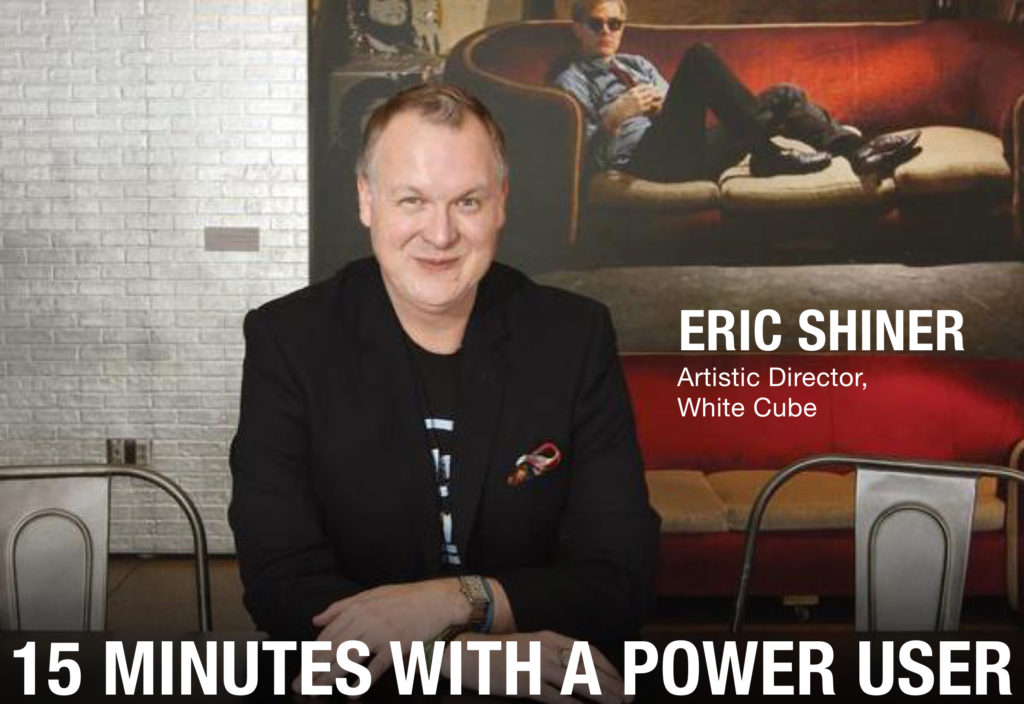15 Minutes With a Power User: Eric Shiner


Artnet Price Database Team

There is only one tool trusted by art world insiders to buy, sell and research art: the artnet Price Database. Its users across industries—from auction houses to museums, galleries and government institutions—represent the art world’s most important players.
We recently spoke with Eric Shiner, the artistic director of White Cube gallery. Eric is an industry veteran who has worked in every corner of the art world, from the Andy Warhol Museum, where he served as director, and Sotheby’s, where he was the senior vice president of its fine art division. There is no one with a better understanding of the current cultural landscape or with a deeper passion for art.
As someone constantly on the move as he travels the world to meet with collectors and artists, we were lucky to catch the globe-trotting expert to chat about the art market—and how being informed is the best way to get an edge.
Eric, you were the long-time director of the Andy Warhol Museum in Pittsburgh. Why do you think Warhol still resonates so strongly today in contemporary culture, and commands ever-increasing prices?
Unlike any artist before or after, Andy Warhol had his finger directly on the social zeitgeist of his age, thus plugging directly into the psychological framework of his nation, his audience and indeed the collective memory of us all. As such, and by extension, his work is automatically understood by nearly everyone that sees it, thanks to his ability to strategically select as his subject matter the major brands, trends and people of his day that would go on to represent the American condition through their ultimate designation as the icons of their specific time and place. Coke and Marilyn Monroe were as important American exports as democracy and JFK, and Warhol not only implicitly knows this, but in a genius fashion, attaches his own name and brand to them through his decision to depict them.
For this reason, his work becomes eternal and iconic in equal measure, ensuring that he will always be attached, fundamentally, to the very roots of American contemporary art. He thus becomes the central figure to the massive art market that has grown up around it, locking himself in as the single most important artist in the canon of contemporary art in general.
Augmented reality and other technologies will likely be the next major medium within which artists will produce work (many already are), and everyone else will need to figure out how these works are shared, sold and traded.
You’ve done everything, from being a museum director, to an auction house specialist, and now you’re working with a blue-chip gallery. How has the art world changed over the course of your career, and are there any interesting observations from all the different vantage points you’ve had?
I have been incredibly fortunate to have had the opportunity to work in nearly every sector of the contemporary art world, except I should note, as an artist. Luckily for the world, that will never happen! Through all of my varied experiences and over the past 25 years, I am happy to report that the constant in the art world is the huge amount of passion that I see in my colleagues in all categories. Seemingly everyone has joined the ranks in support of artists and their work and making their voices heard.
The biggest change is certainly the now vast numbers of soldiers entering the front from all sides. There has been an explosion of artists, gallerists, curators, and collectors over the years that I’ve been in the game, just as there has been in a large growth in the number of museums, fairs, and biennials at which artists have the chance to share their work with the world. I do sometimes worry that we have reached a saturation point, but I always look to the great artists and innovators in our world to lead the charge forward to new frontiers which are most decidedly ahead of us.
Contemporary art has been on a seemingly unstoppable upswing over the past three decades. Do you see any threats to this market in the next 10 years?
I don’t see it as a threat but as an incredibly exciting opportunity, but technology stands as the biggest category to which the art world will need to modify itself so as to prepare for what the future holds. Augmented reality and other technologies will likely be the next major medium within which artists will produce work (many already are), and everyone else will need to figure out how these works are shared, sold, and traded. It’s an exciting frontier that will define our age until the next new innovation comes along. Luckily for us, artists are usually the first to experiment with the new, and they’ve done so for all time. That’s one of the main reasons that we remember them.
I love the history of objects and how they fit into our contemporary lives and spaces.
If you hadn’t had a career in art, what do you think you would’ve done?
I’d likely be an antiques dealer or an interior designer. I love the history of objects and how they fit into our contemporary lives and spaces.
What was the last thing you searched for on the artnet Price Database?
Warhol, of course! (Just to make sure he’s still doing well, and luckily he is.)
The Price Database is the art market research tool trusted by appraisers and aspiring collectors alike. To learn more and to choose from our range of subscription options, click here.